The ocean water surrounding the Caribbean island of St. Croix is a beautiful turquoise that sparkles under the sun, providing a crystal-clear view into the depths below. Add in the white sandy beaches and rainforests and you’ve got a tropical oasis known as “America’s paradise: no passport required.”
It's this land that Kemit-Amon Lewis calls home, an island that’s a skip away from Puerto Rico to the west and the British Virgin Islands to the north. Here, he spent his school days scuba diving with his marine biology program, learning about the coral reefs, sea turtles and dolphins that make up ocean life. It’s here where he spent summers, not at camp, but at the beach with his father — from 9 to 5, Lewis says — swimming or foraging in the rainforest for fresh fruit.
“We would leave school at the beginning of summer one complexion and return to school in the fall a few complexions darker,” Lewis says. “St. Croix was a pretty cool place to have grown up.”
It’s in those clear waters that the young Lewis chose to dedicate his career to preserving the environment and the lives that call it home. He returns today as a grown man to escape back to nature — away from social media and technology that inundates our lives.
It’s also those waters that might have played a role in nearly killing him.
It was one of those summers with his father. The two swam far offshore, snorkeling and exploring, furthering Lewis’ love for this underwater oasis. Then screams came from the shore.
“SHARK! SHARK!”
There was a fin bobbing above the water. People on the beach shouted for Lewis and his father to swim back, to get away from the stalking beast.
Lewis was puzzled. Shark? He had a clear view of his surroundings, and there was no shark — just a curious dolphin nosing around the two swimmers. Lewis had studied dolphins and knew they were mostly harmless, though they can be aggressive jerks, so he kept his distance. But to race back to shore? Ha, please.
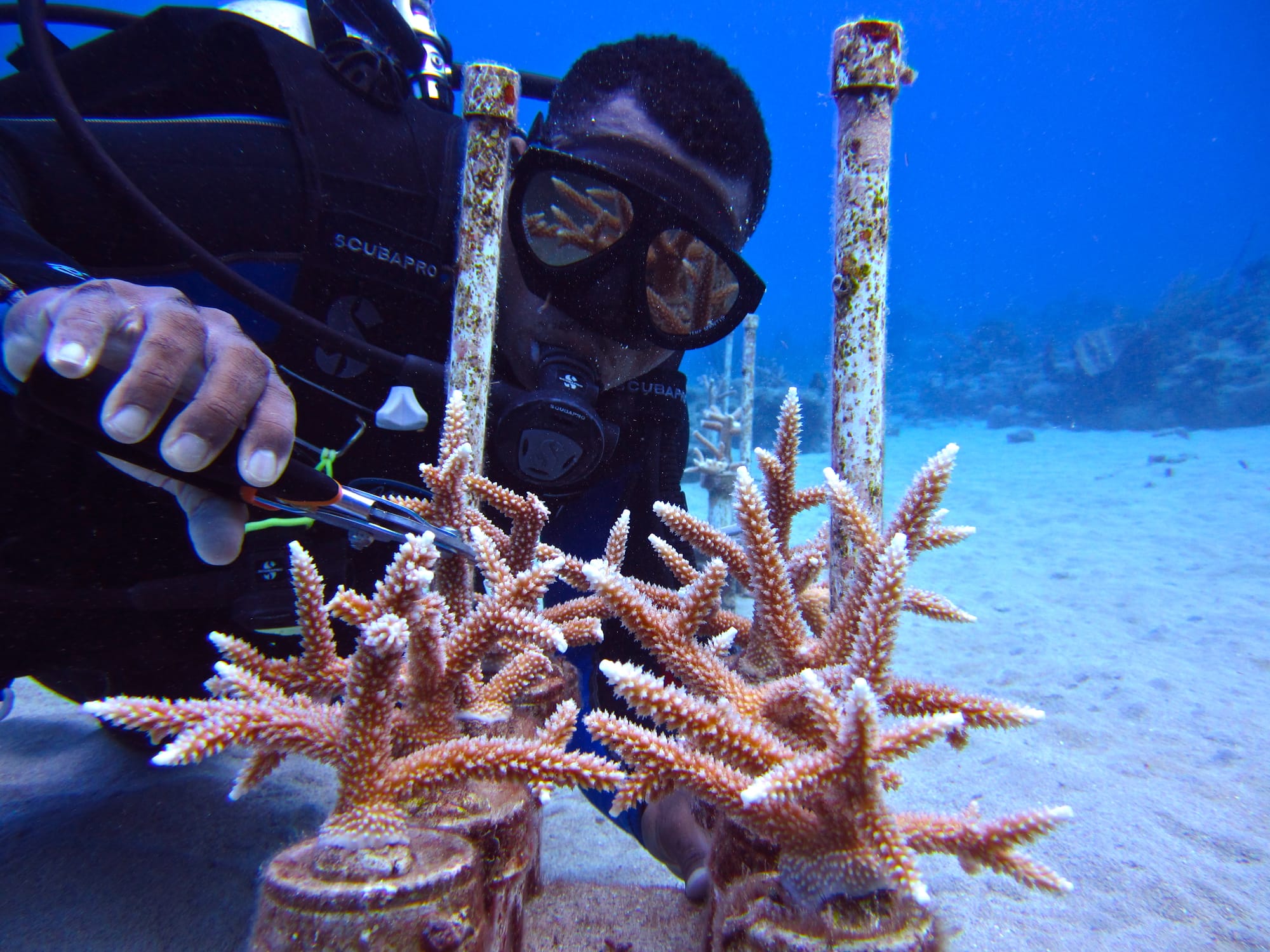
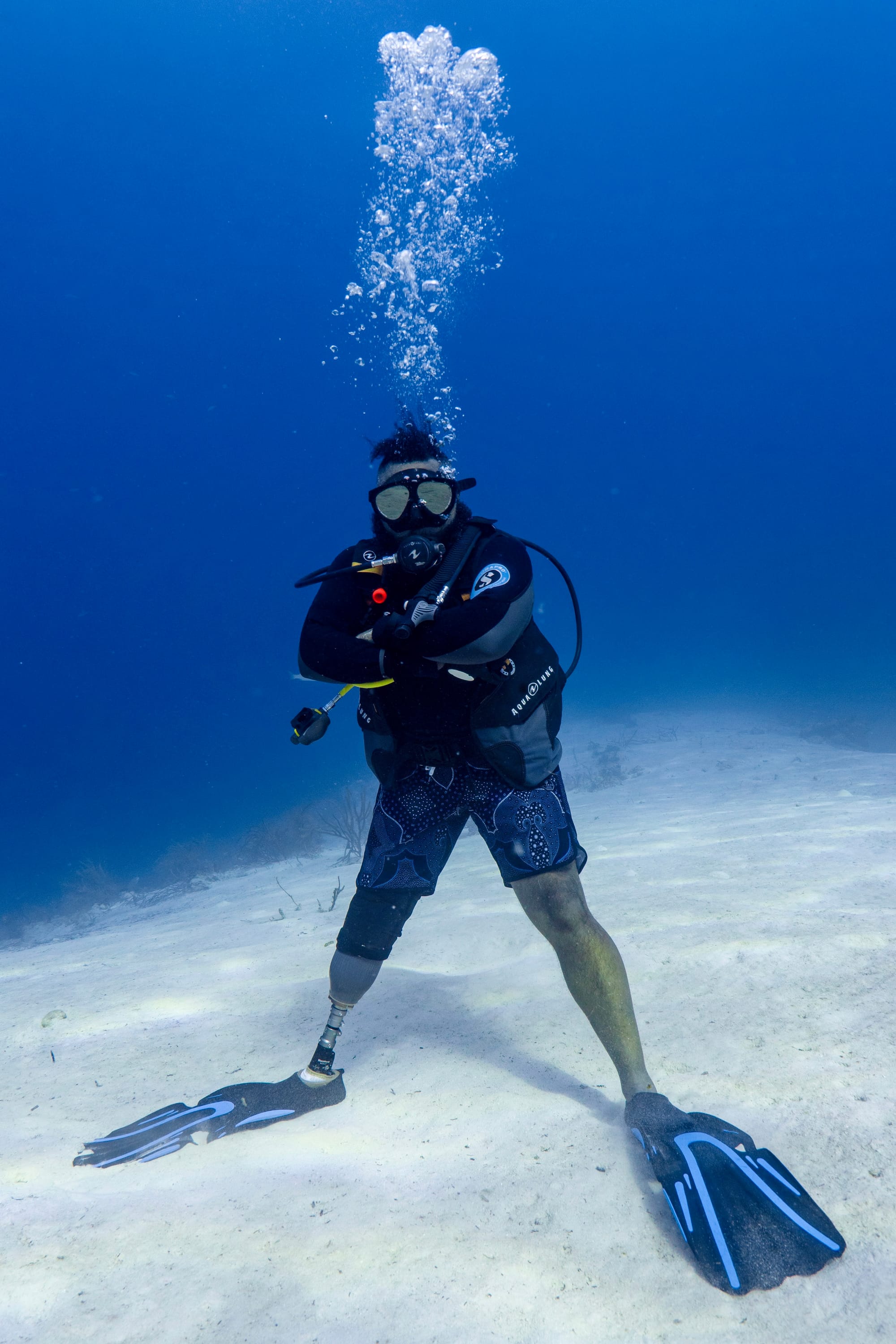
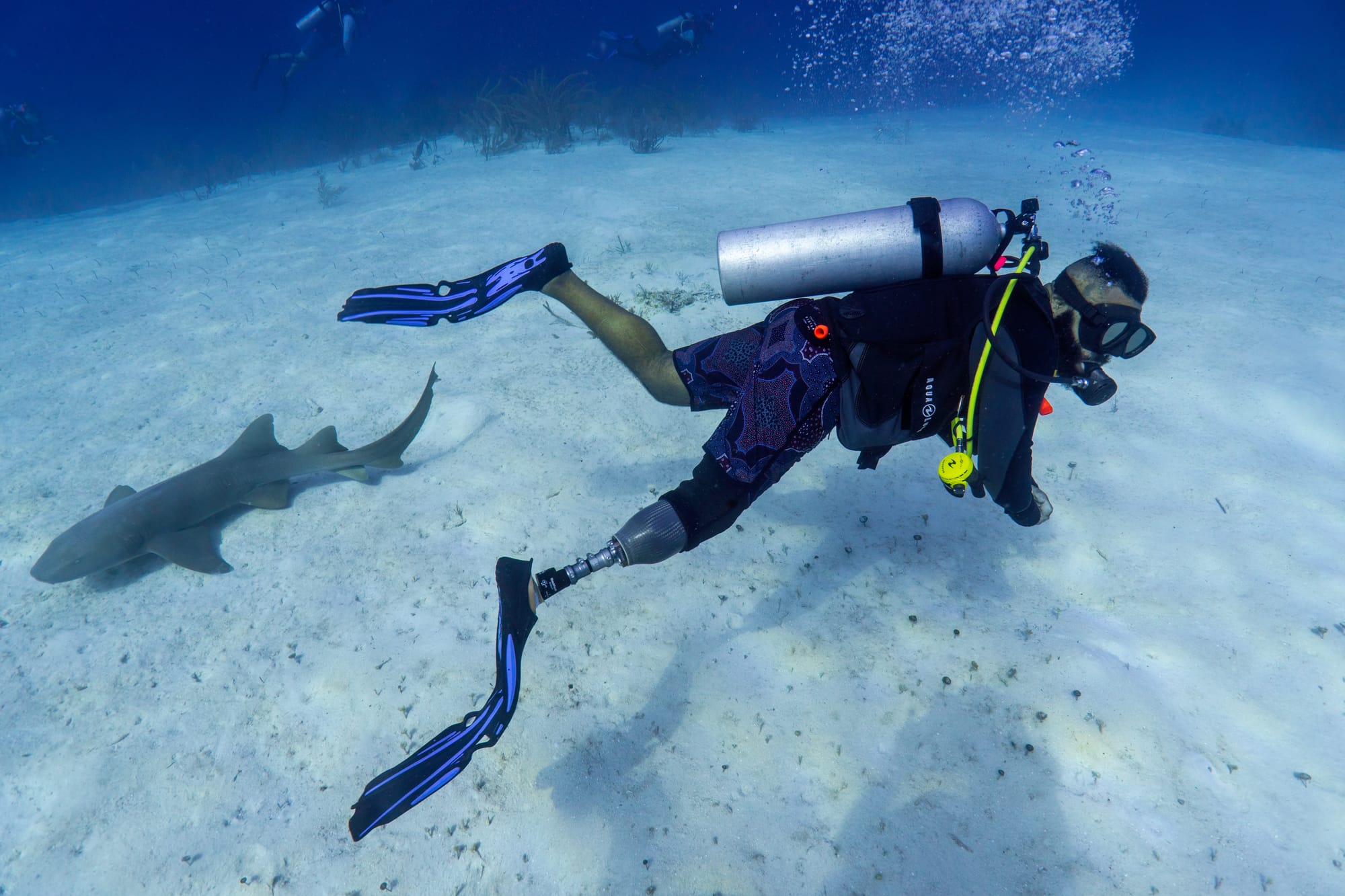
Lewis found a love for the ocean as a boy growing up in St. Croix. [Courtesy photos]
“That was one of the coolest experiences for me,” Lewis recalls today with a laugh. “Having these people scared for their lives onshore; meanwhile, we’re having the time of our lives offshore.”
That’s one of Lewis's many memories from growing up on St. Croix. But it wasn’t his near-death experience. That came decades later.
Lewis, 36 years old at that point with a graying beard, had dinner with his father at their favorite Thai restaurant on the island. His friends wanted him to join them at a bar afterward — relax, dance, have a few drinks — but Lewis wasn’t feeling well and hoped some sleep might ease him. Yet the next morning, he wasn’t feeling any better and figured he should visit the local clinic. His best friend, Karisma, drove him to the nearest Acute Medical Center, where doctors quickly realized something was wrong; his vitals were off. They urged him to get to the emergency room. ASAP.
Lewis was in and out of consciousness in the back of the ambulance. At the ER, doctors learned he was suffering from a blood infection that led to septic shock. Lewis’ vital organs were shutting down. If only the hospital had a dialysis machine, doctors could buy some time filtering the toxins from his blood while they treated the infection, but the hospital possessed no such device.
Staff called other hospitals — in Puerto Rico and as far as Florida — asking if they could take Lewis, but his condition was so poor that he likely wouldn’t survive the trip. The night before, Lewis was eating dinner with his father, celebrating his father’s birthday. The next day, on his mother’s birthday, doctors were saying that this otherwise healthy man — a tennis player and dancer — wasn’t going to survive. Friends and family should prepare to say goodbye.
Lewis is well-known on the island for his conservation work. He’s the one who aspired to open a dolphin theme park that doubled as a rescue and rehab center on the island. He’s also the one who spent nights on the beach collecting data on six-foot sea turtles returning to their birthplace to lay their own eggs and later watching those baby turtles hatch and fight through the sandy beach to return to the ocean. Over the past decade of his career, he’s focused on coral reef restoration, building new sites, developing best practices, and training colleagues on St. Croix, The Bahamas, Grenada, Cuba, as far away as China.
“The first time I saw a turtle doing her thing, she was essentially crawling over another one to get to a similar spot. And out of all the beach space, I was there, and that was a moment for me,” Lewis says.
There were a series of small miracles that helped Lewis in those hours when doctors said he wasn’t going to survive. A nurse noticed his friend, Frank, in the emergency room. When she learned that Lewis was near death, she pulled in another doctor who Lewis recalls was “on the same wavelength” and who pestered more hospitals to take him.
Doctors helped stabilize his vitals by giving Lewis a drug that routes oxygen-rich blood to his vital organs to prevent them from shutting down — at the sacrifice of depriving oxygen to his arms and legs, his fingers and toes. Paramedics with an air ambulance team had advanced tools to give a more accurate reading of his vitals. With his vitals more stabilized, a hospital in Fort Lauderdale, Florida, agreed to take him. He was intubated and unconscious during the three-hour flight.
Air ambulance paramedics typically don’t wait the many hours it took doctors to stabilize his vitals.
“There were a number of angels that stepped in that night,” he says.
Lewis arrived in Florida critically ill with multi-system organ and respiratory failure, says Dr. Maxine Hamilton, one of the many doctors who treated him. He spent two weeks in a coma, only awakening when doctors gave him a “holiday” or a time when doctors woke him up to gauge his brain activity. Lewis doesn’t remember much from this period, though he says there was no white light he had to walk away from.
Doctors treated the infection while Lewis was in the coma, but there was little they could do for other oxygen-deprived parts of his body from the vasopressors. When he woke from the coma, he saw the decaying, shriveled, black tissue on his right hand and foot, as well as the fingers on his left hand and the toes on his left foot. Dr. Hamilton told him he would one day be back to dancing, playing tennis, and scuba diving. But first, he had to make an important decision: Did he want to amputate?
Lewis is a rare breed because he can use both sides of his brain. One moment, he might be studying the cyclical return patterns of sea turtles and the next, he’s driving down the highway to Los Angeles with a new CD from a band he’s never heard of, choreographing an entire dance to the songs. True story. He calls it “Black Canvas,” and it’s been one of his best-received pieces of work in his career.
So when it came to a decision about amputation, Lewis flipped on the scientific part of his brain. He stared at his decaying limbs knowing that if he waited too long to decide, necrosis could spread and require further amputation.
“I think the scientist in me allowed me to be super objective about the decision and remove some of the emotion that others would have,” he says.
Doctors removed Lewis’ right hand at his wrist, his right foot just below his calf, fingers and part of his thumb from his left hand.
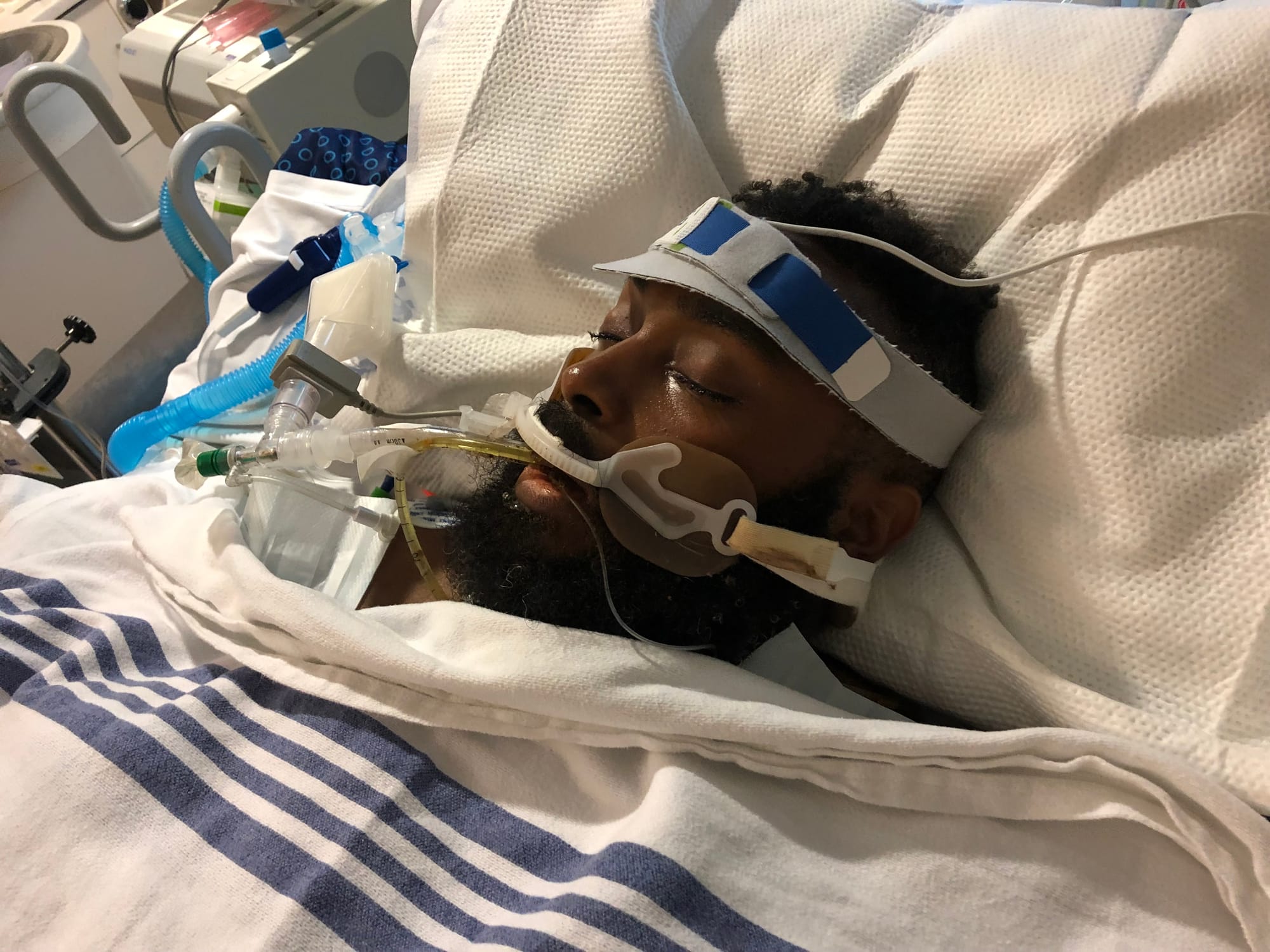
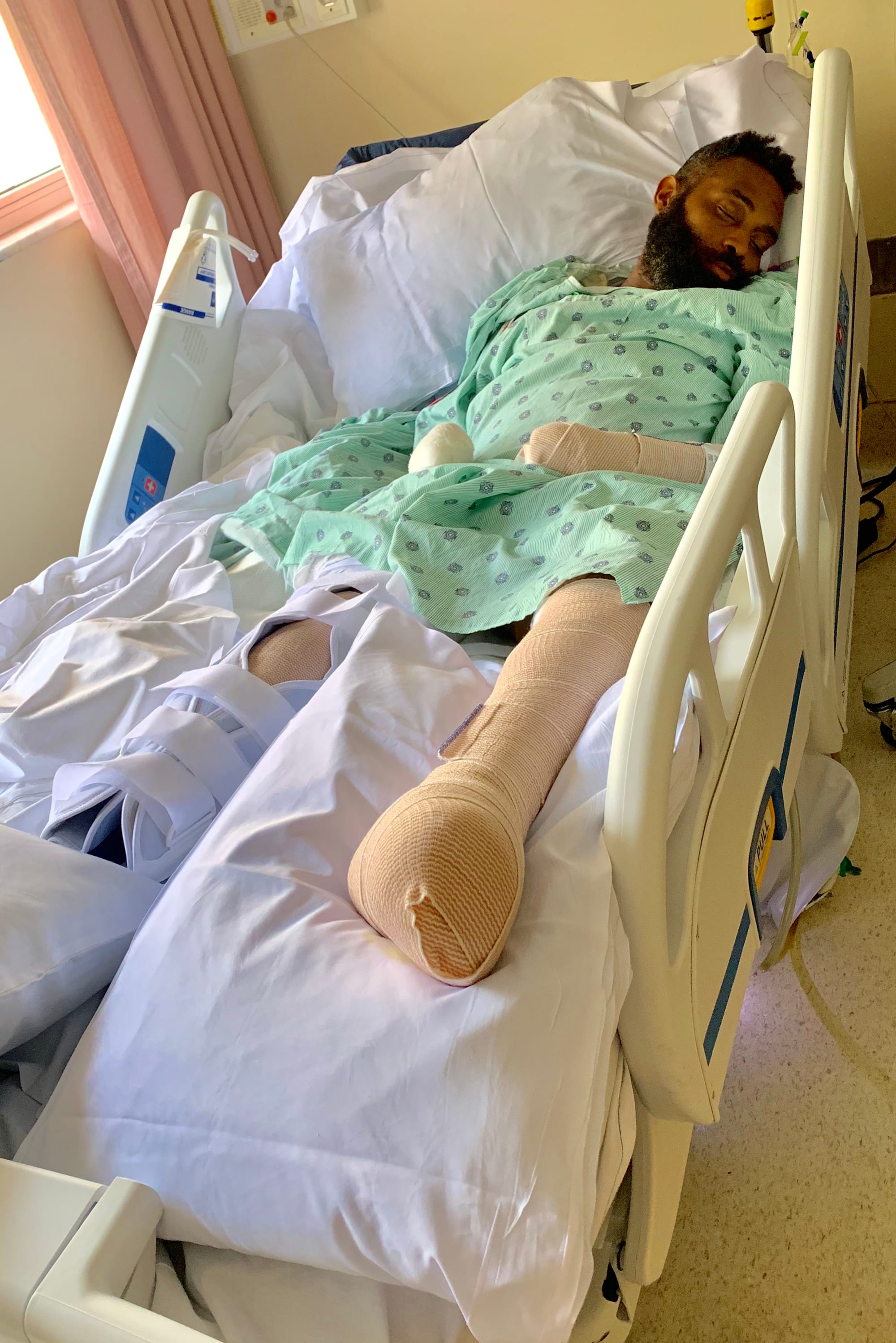
Lewis spent two months in the hospital as doctors fought to save his life. [Courtesy photos]
If he was disheartened, discouraged, or downright angry after the surgeries, he didn’t let it affect him for long. He had so much to live for prior to his illness and still so much to live for after. He was the boy in high school whose classmates voted him the most ambitious and the most likely to succeed. (Also, the shortest — “but that one doesn’t matter,” he says with a hearty laugh.)
Doctors and nurses had poured so much effort to save him. He couldn’t let them down. Nor could he give up on behalf of his family and friends who supported him throughout his hospital stay. And there was still so much to accomplish with his life.
“I really see this new chapter as a second wind, a second chance,” he says.
Lewis was discharged from the hospital in September 2019, nearly two months after first visiting the clinic on St. Croix. After seeing him when he first arrived, looking like he wasn’t going to make it to leave the hospital as a survivor, Dr. Hamilton couldn’t help but smile. “He has literally walked out of here with his kidneys not being on dialysis, his heart with absolutely no damage, and his lungs fully functioning. It’s just fantastic,” she said after his discharge.
Lewis started rehab immediately to adapt to his new life, relearning routine tasks such as getting dressed. In the early months out of the hospital, he used an electric wheelchair, but in January 2020, he was outfitted with a prosthetic leg. Then, the COVID-19 pandemic shuttered the world, and once again, Lewis had to adapt. Rather than rehabbing in the gym, he chose rehab outside at a park near his house.
Each morning, Lewis slowly walked over a bridge and down a small hill that led to baseball and soccer fields and pickleball courts. The elevation of the walk strengthened his gait and built trust in his new leg. During each trip, he FaceTimed with his friend Frank, who — like the of best pals — hoped to see Lewis slip and tumble down the hill.
“No, it still hasn’t happened, Frank!” Lewis says with another hearty laugh.
Walk by walk — baby step by baby step — Lewis grew more comfortable with his leg. First on pavement. Then gravel. All the while, he had tennis, dance, and diving in the back of his mind.
“There isn’t a limit to what the human body can do when your mind is right,” Lewis says. “Start with the mind. Allow it to be strong enough to help the body overcome.”
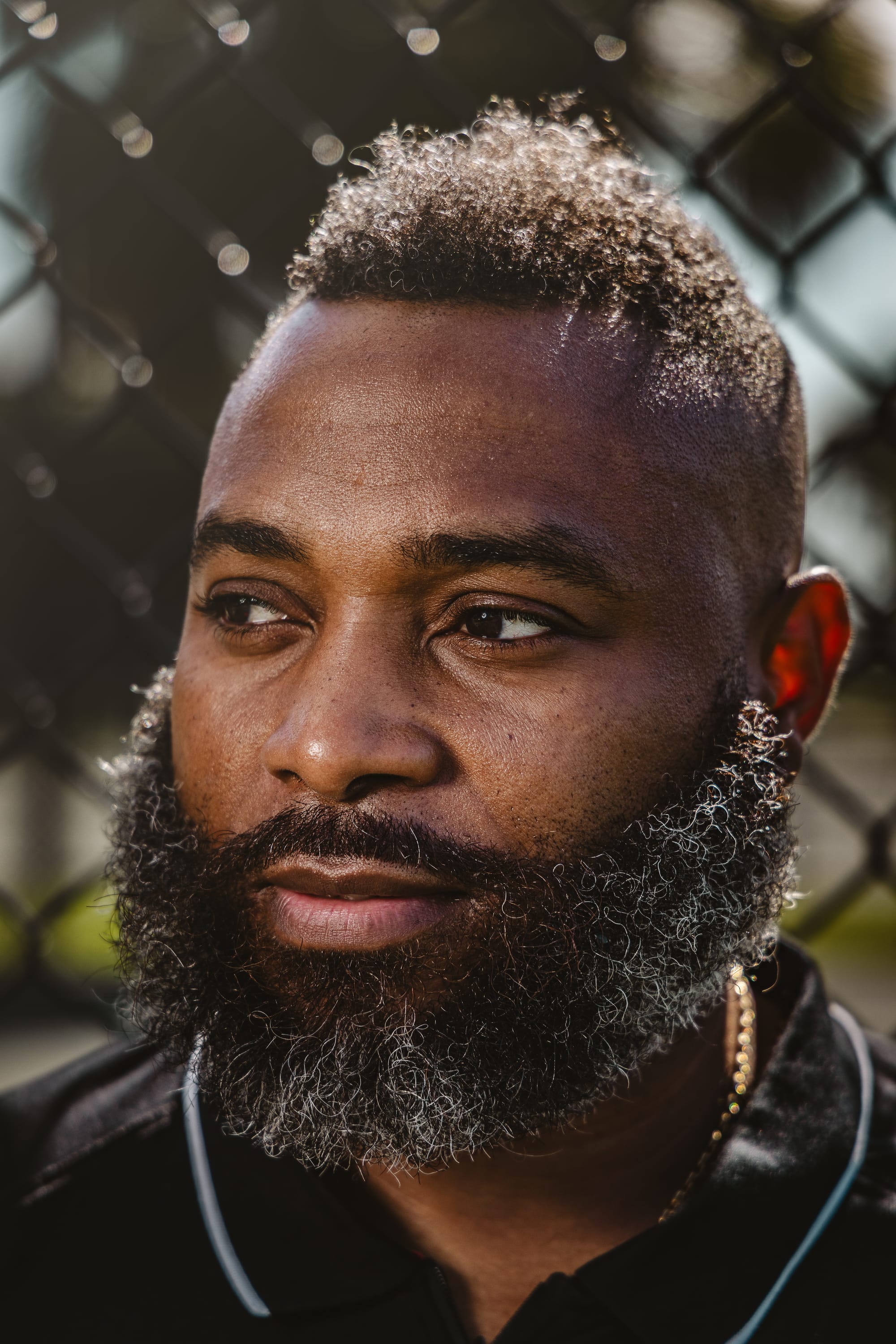
As Lewis built strength and trust in his leg, he was given a blade to get back to playing sports. Blades are often used by runners with limb disadvantages, which allows them more spring in their step. But Lewis started small. He picked up pickleball to work on hand-eye coordination and learn how to run and stop with the blade. Walking was one thing, running was a whole different concept.
Because Lewis was missing his dominant right hand, Brett Rosen and his team at the Hanger Clinic in Florida helped develop a device. That led to an iteration with a tennis racket and a socket. And while there was some tweaking to prevent paddles from breaking or to find Lewis’ sweet spot with the racket, it all led to a defining moment in Lewis’ life. Wilson came calling. Sporting Goods Wilson. Tennis Wilson. We want to help you improve your gear, Wilson.
Lewis found himself at Wilson headquarters in Chicago, talking to engineers about his equipment, what he needed, and what he would like to have. He was invited to join the Wilson 360 Advisory Team. He hopes to have a prototype tennis racket to test in the coming months.
“The idea is that the technology will be available for others who need it in the future,” Lewis says. “I’m happy to be a part of that process.”
This past January, Lewis found himself on the clay tennis courts at the Oceania Para-Standing Tennis Championships in Melbourne, Australia. It was an awe-inspiring moment for the 41-year-old, both because of the challenges he’s faced and the opportunities his new life has given him.
Lewis assumed his competitive playing days were over after playing his last match at Savannah State University, where he was part of a team with players from Trinidad, Turks and Caicos, and the Bahamas.
But here he was on the court again, competing against other para-standing athletes — those with limb differences that don’t require a wheelchair — from across the world. Lewis made it to the finals in both singles and doubles matches.
“Tennis is already a beautiful sport…the best sport ever, and para-standing takes it up a notch. The level of adaptation, innovation and problem-solving is unmatched,” Lewis said after the tournament.
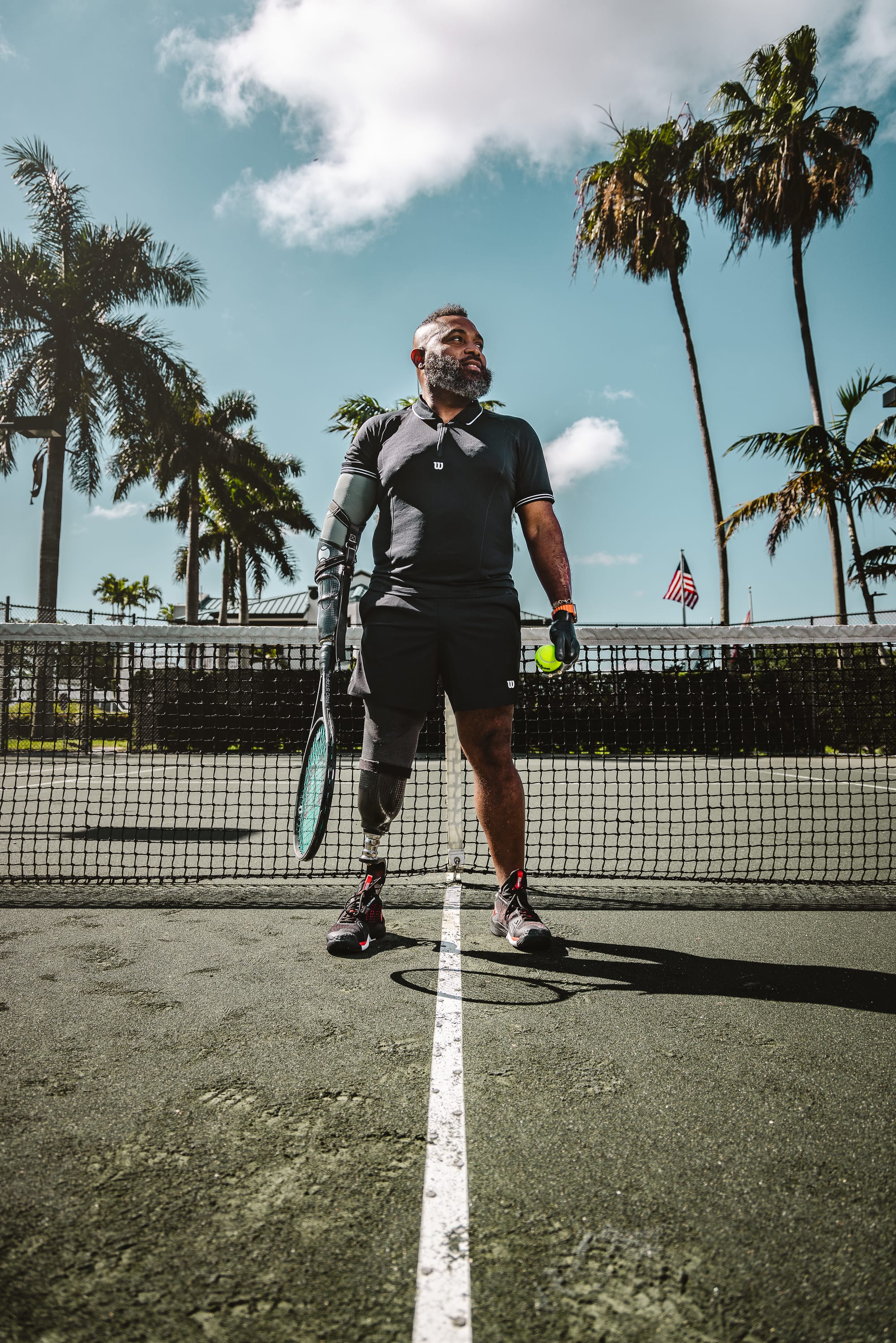
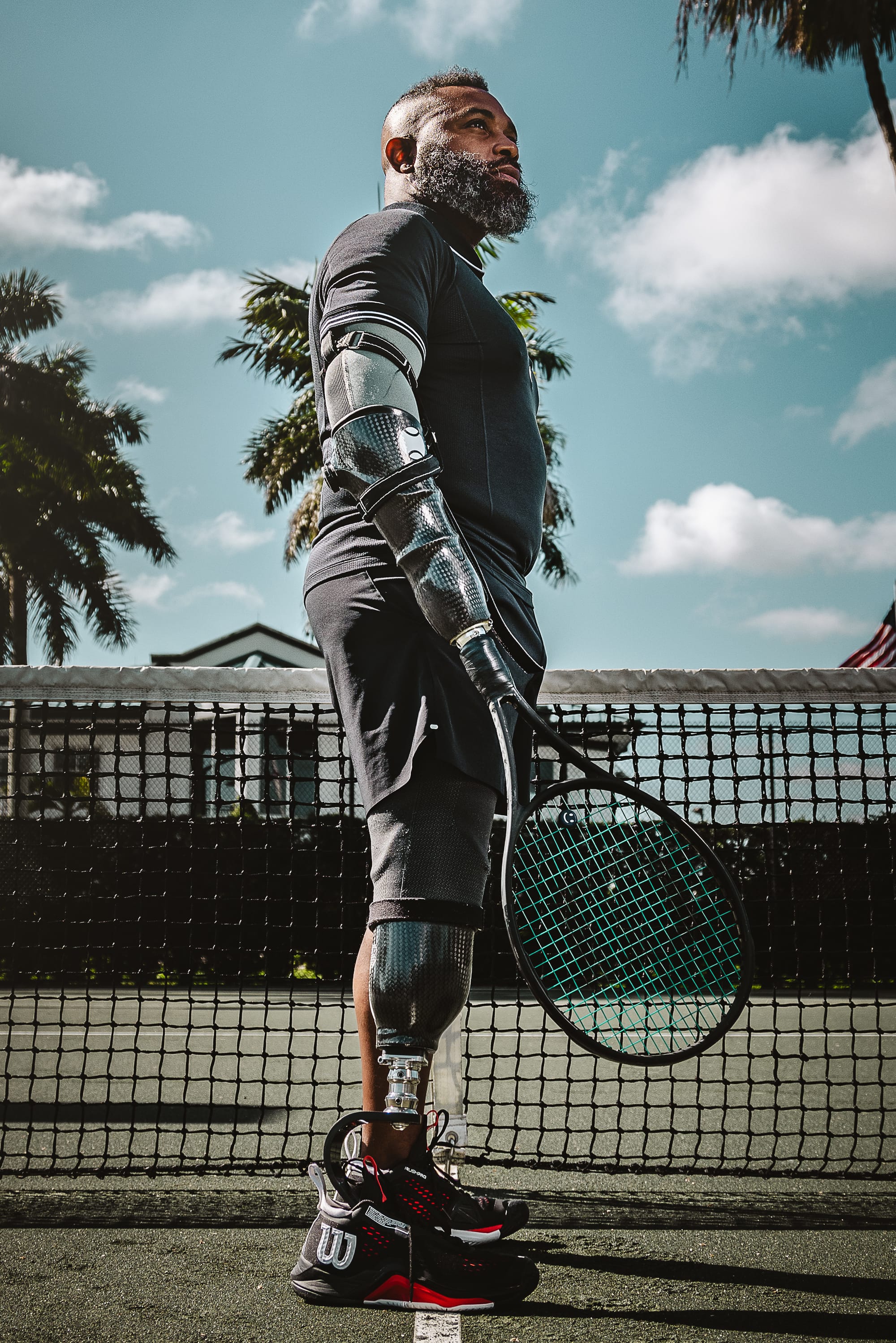
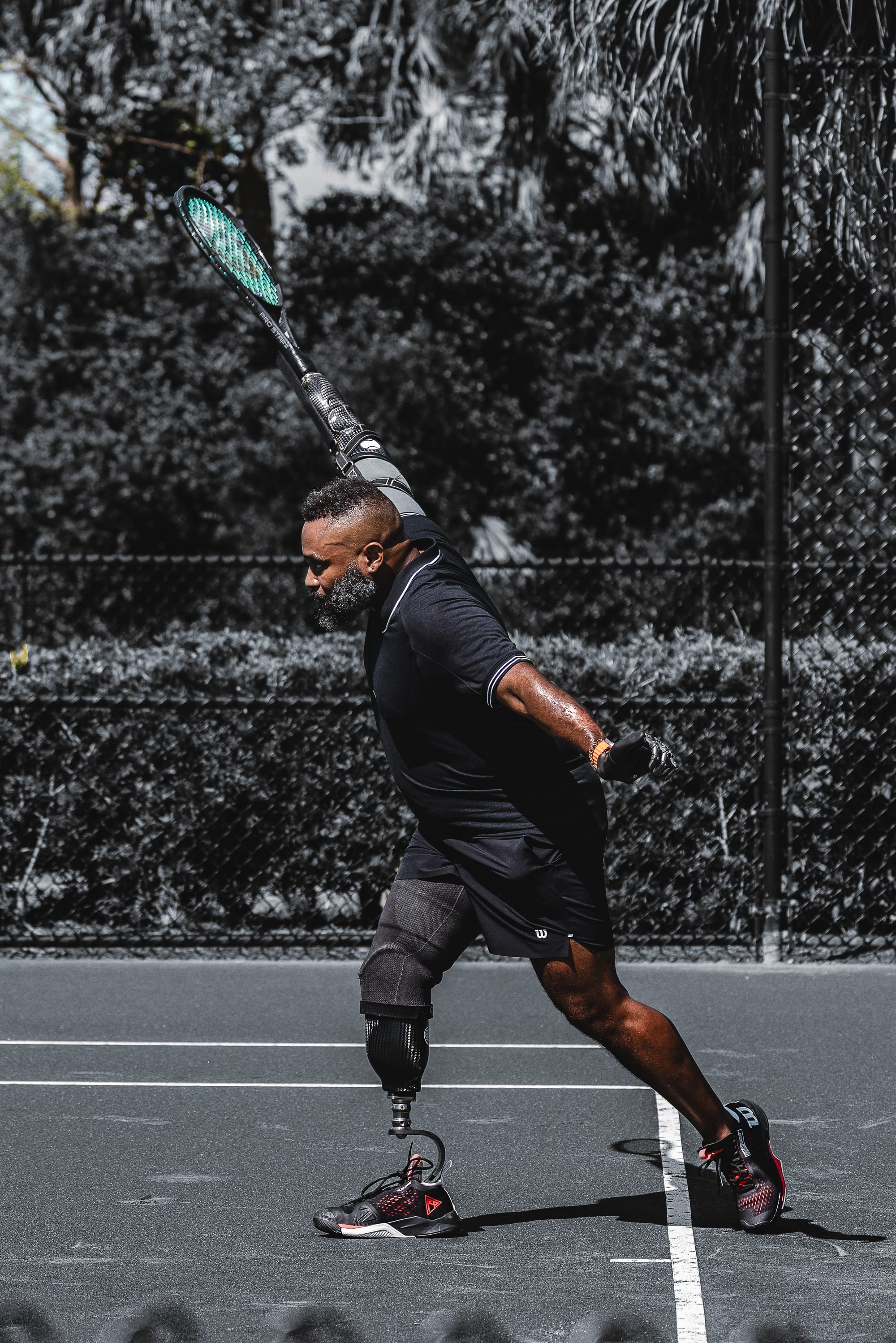
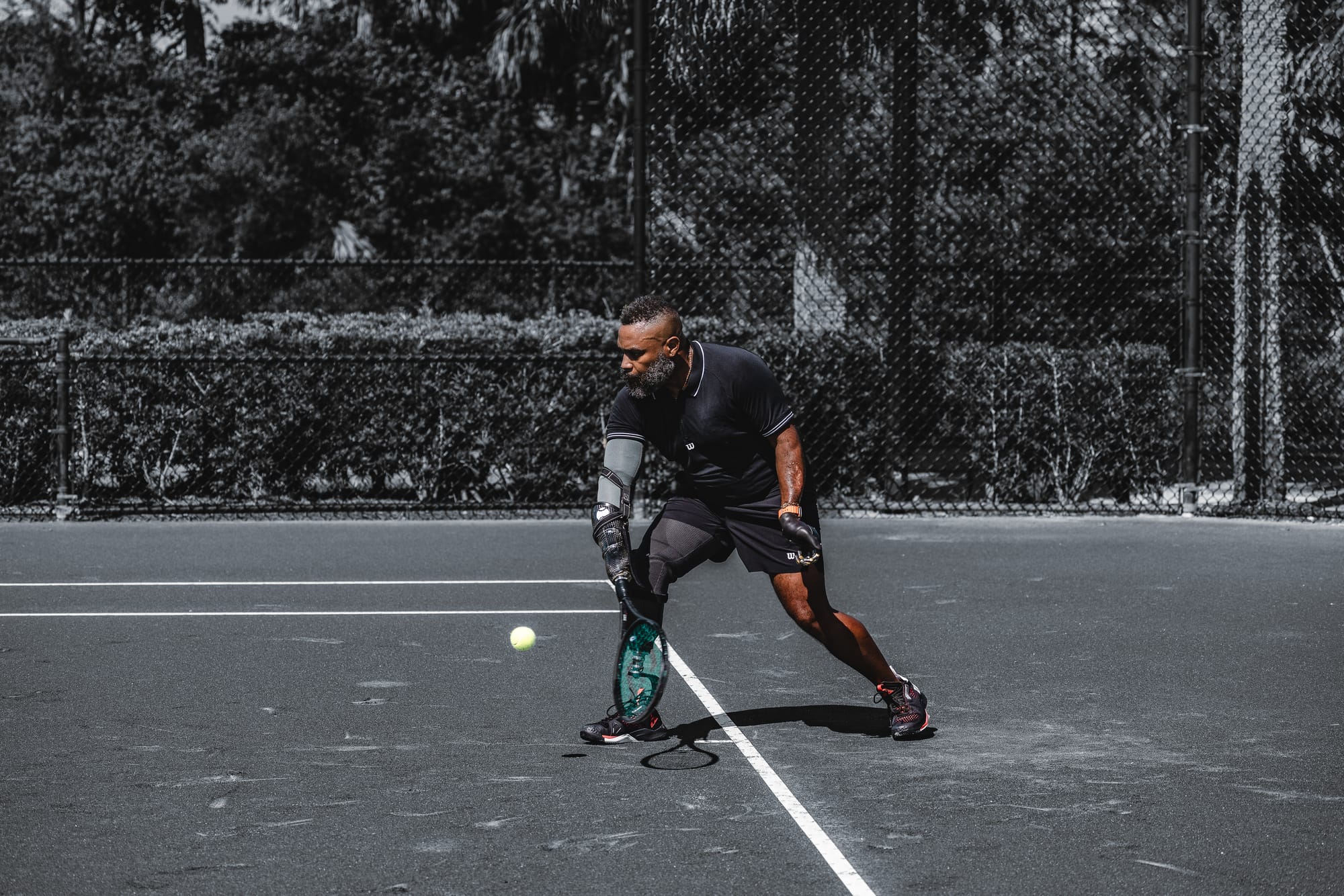
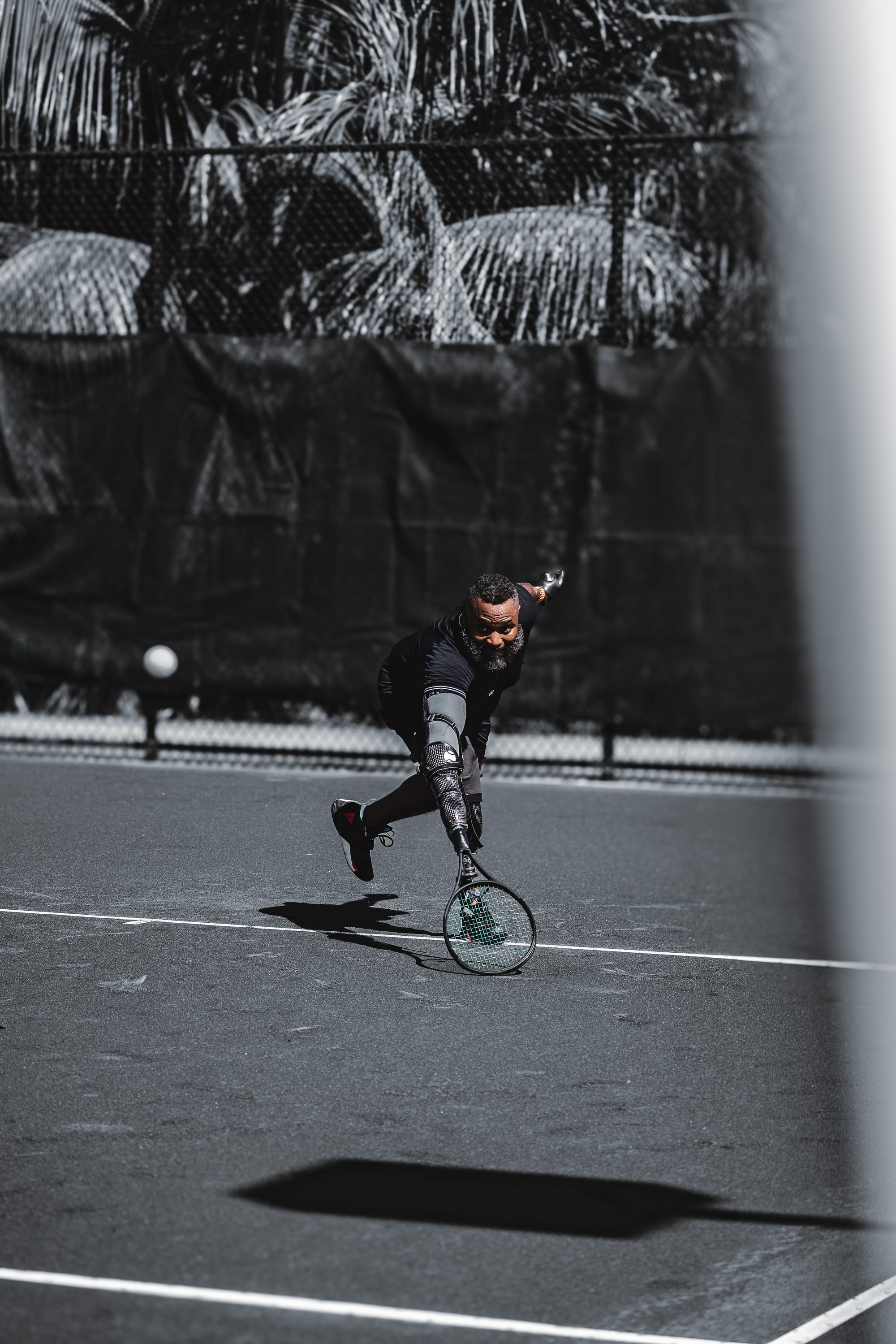
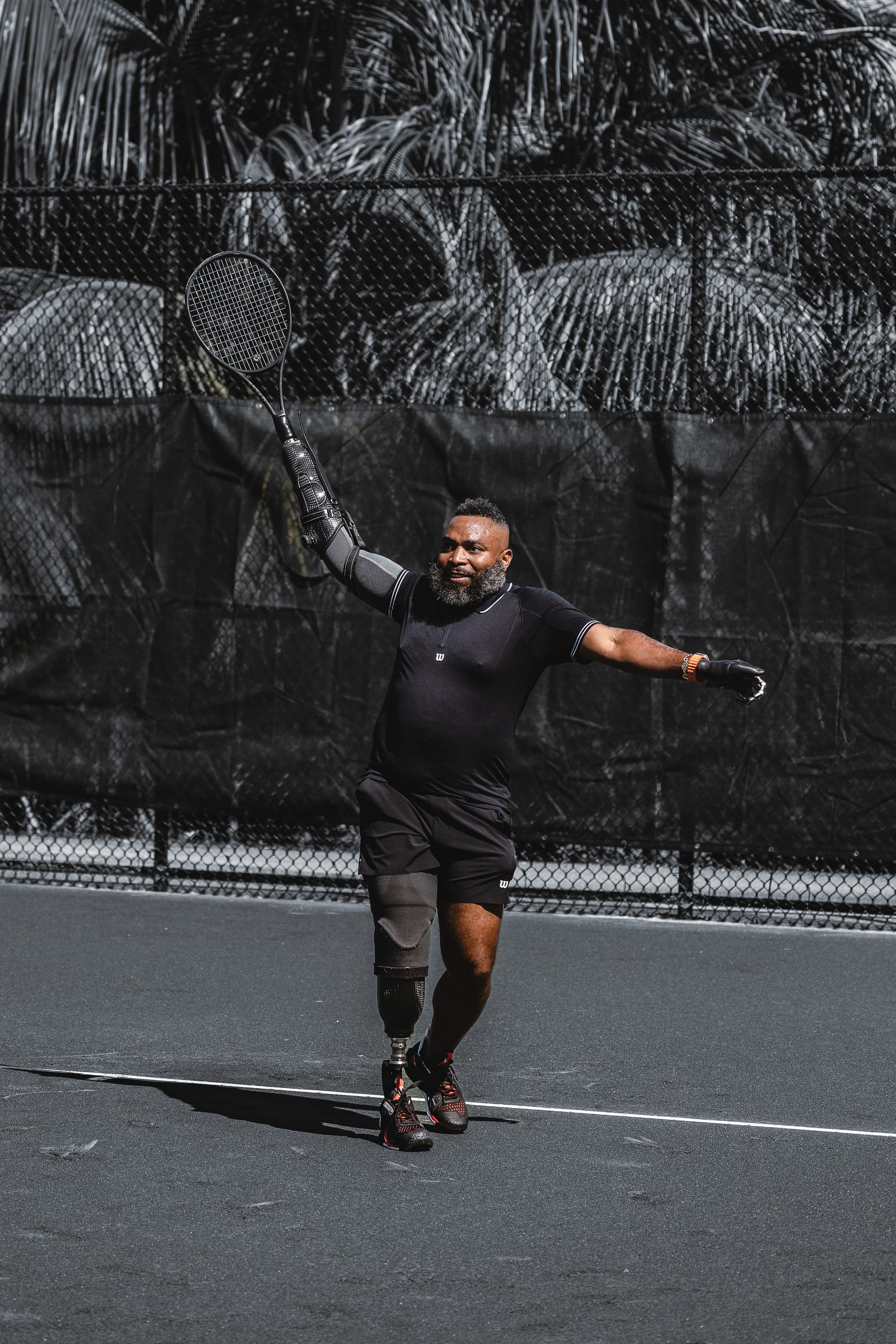
Lewis is fully embracing his second chance at life. [PJ Davis photos]
Lewis’ ascent back to a normal life hasn’t stopped at the tennis court. He lives on his own, fully independent — another one of his goals in the hospital. He’s dancing, too, and has returned to the water, just like Dr. Hamilton promised him four years ago.
His first dive was at a familiar spot in the Bahamas: a shipwreck sight called the Ray of Hope. He swam through the sunken ship with sharks and schools of fish, aided by a stainless-steel leg with a hydraulic ankle that allowed him to kick underwater.
“It was almost like riding a bike,” Lewis says. “Like I had never left.”
Lewis is still unsure what caused the blood infection that nearly killed him, though he has a theory. Weeks before he felt sick, he swam in a harbor in St. Croix and the water may have been dirty with boaters not properly dumping their wastewater. Is that how he was infected?
He’ll never know for sure — not that it matters, really. He’s still alive today, embracing the second chance he’s been given. There’s more dancing at bars while laughing with friends, more tennis and pickleball matches, and more dives in the crystal-blue waters of St. Croix, which always feels like home.